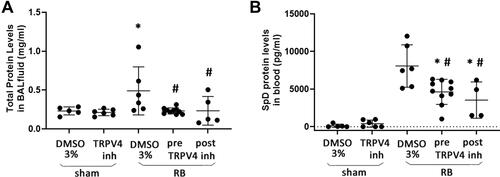Figures & data
Figure 1 Mechanical properties of the respiratory system following resistive breathing and the effect of TRPV4 inhibition. (A) RB provokes a right- and downward shift of the static pressure-volume (P-V) curve, consisted with the presence of lung injury. Following TRPV4 inhibition the mean P-V curve moves towards control curves. To minimize figure complexity, only the expiratory part of the mean P-V curve for every experimental group is depicted. (B) 24 hrs of RB decreases static compliance of the respiratory system, an effect that is ameliorated following TRPV4 inhibition. (C) Tissue viscance was increased after 24hrs of RB, an effect not noticed after TRPV4 inhibition. (D) TRPV4 inhibition ameliorated the increase in tissue elasticity after 24h of RB, as measured with FOT. Data presented as mean ± stdev, n = 5-8 per group, *p < 0.05 to sham + 3% DMSO, #p < 0.05 to RB+ 3% DMSO.
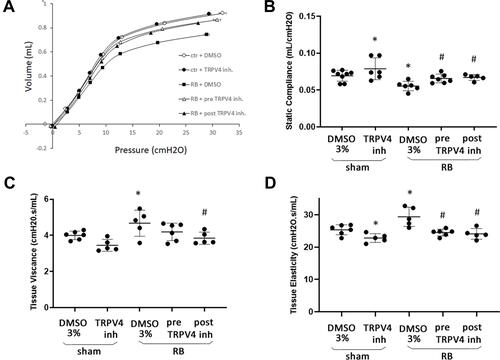
Table 1 Histological Features of Lung Injury Following Resistive Breathing and the Protective Effect of TRPV4 Inhibition
Figure 2 Histological analysis of lung tissue sections following resistive breathing and the effect of TRPV4 inhibition. Representative figures of H&E stained lung tissue sections (400x magnification) for sham plus 3% DMSO (A), sham plus TRPV4 inhibitor (B), RB plus 3% DMSO (C), RB plus prophylactic TRPV4 inhibition (D) and RB plus therapeutic TRPV4 inhibition (E). Note that RB is associated with the presence of increased alveolar membrane focal thickening, capillary congestion, intra-alveolar hemorrhage, interstitial and intra-alveolar leukocyte infiltration and the presence of edema, resulting in an increased total lung injury score (F). Prophylactic TRPV4 inhibition completely ameliorates the aforementioned features, while therapeutic inhibition exerts a partial protective effect. Data presented as mean ± stdev, n = 6-7 per group, *p < 0.05 to sham + 3% DMSO, #p < 0.05 to RB+ 3% DMSO, ^p < 0.05 to RB+preTRPV4 inh.
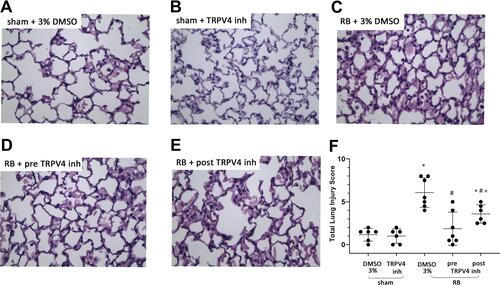
Figure 3 Total and differential cell count in BAL fluid following resistive breathing and the effect of TRPV4 inhibition. 24h or RB was resulted in increased total cell numbers in BAL fluid (A), due to raised macrophages (B) and neutrophil counts (C). Preventive TRPV4 inhibition completely abolished this effect, while therapeutic TRPV4 inhibition exerted a partial protection. Data presented as mean ± stdev, n = 5-6 per group, *p < 0.05 to sham + 3% DMSO, #p < 0.05 to RB+ 3% DMSO, ^p < 0.05 to RB+preTRPV4 inh.
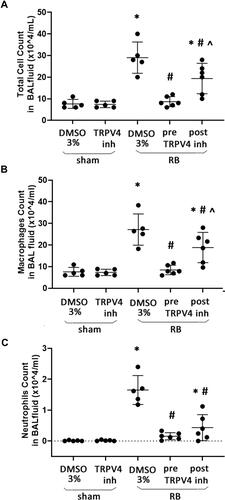
Figure 4 Protein levels of inflammatory cytokines in BAL fluid following resistive breathing and the effect of TRPV4 inhibition. (A) IL-6 protein levels were elevated in the BAL fluid following 24 hrs of RB, an effect that was ameliorated by both prophylactic and therapeutic TRPV4 inhibition. (B) The administration of TRPV4 inhibitor, HC-067047, exerted a partial protective effect against the upregulation of KC following 24hrs of RB. Data presented as mean ± stdev, n = 4-10 per group, *p < 0.05 to sham + 3% DMSO, #p < 0.05 to RB+ 3% DMSO.
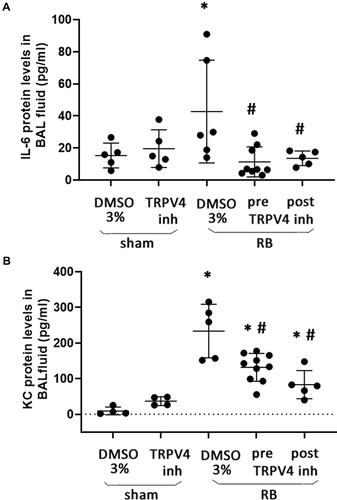
Figure 5 Total protein level in BAL fluid and Surfactant protein D (SpD) plasma levels following resistive breathing and the effect of TRPV4 inhibition. (A) 24hrs of RB increased total protein levels in BAL fluid (an indirect marker of increased lung permeability), an effect that was blocked following both prophylactic and therapeutic TRPV4 inhibition. (B) TRPV4 inhibition partially prevented the increase of SpD plasma levels. Data presented as mean ± stdev, n = 4-10 per group, *p < 0.05 to sham + 3% DMSO, #p < 0.05 to RB+ 3% DMSO.
